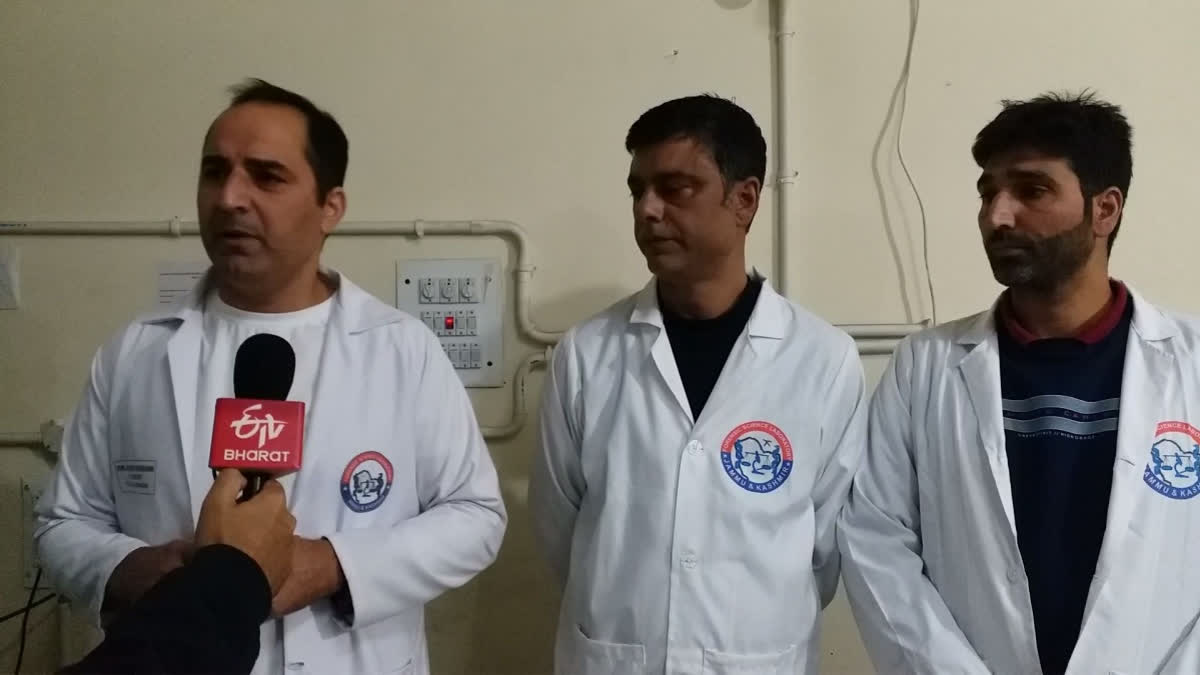Srinagar: A new study has provided the first scientific evidence of Jammu and Kashmir’s genetic ties to Central Asia, substantiating the deep cultural and trade relationship between the two regions in ancient times.
Carried out by the Jammu and Kashmir Forensic Science Laboratory (FSL) Srinagar and published in the coveted International Journal of Legal Medicine, the study 'Exploring the genetic implications of demographic dynamics in Jammu and Kashmir using autosomal STRs’, analysed DNA samples from 694 individuals including male and females across 20 districts to reveal the region’s genetic roots.
The research accessed by ETV Bharat unveiled five primary origins contributing to the ancestry of Jammu and Kashmir’s population. This includes East Eurasia, Northern and Southern Pakistan, Central and Southern India.
The findings confirm a genetic admixture of the population in the Kashmir region with Central Asian and Arab influences, which traces its origin to the ancient Silk Route.
The route, named by German geographer Ferdinand von Richthofen, passed through Ladakh via the Karakoram mountains and was a key corridor for traders, travellers and spiritual leaders. This includes Mir Syed Ali Hamadani, the 14th-century Sufi saint who alongside 700 missionaries is considered as the region's guardian of Islam and crafts.
However, district-wise stratification of the analysis provided a 'congruence' with the demography and geography of the region. The DNA analysis showed that Jammu districts have genetic similarities with neighbouring states in northern and southern India. Interestingly, districts like Ramban, Reasi and Kishtwar though geographically adjacent showed diverse genetic profiles.
The analysis indicates that districts such as Srinagar, Anantnag, Ganderbal, Budgam, and Bandipora along with Jammu, Samba, Reasi, Doda and Poonch share genetic similarities with Sindhi ethnic groups and the populations of Gilgit-Baltistan in Pakistan as well as north Indian groups with European roots.
In contrast, Baramulla, Kulgam, Shopian, Kupwara, Udhampur, Rajouri, Kishtwar, and Ramban were found to have ancestral links to Pathan-Balochi, Meena ethnicities and South Indian populations with African American and European influences.
Lead author Dr Nadeem Mubarik, a scientific expert at FSL Srinagar, explained that the study, based on autosomal STR analysis, provides the first scientific evidence of the region’s diverse genetic heritage.
"We have traced Kashmir’s links to Central Asia scientifically for the first time,” Dr Mubarik told ETV Bharat. "This research will significantly impact the justice system, as DNA evidence in court cases can now be supported by statistical data."
The study had collaboration comprising software and experts from Central Forensic Science Laboratory, Chandigarh, Regional Forensic Science Laboratory Jabalpur, State Forensic Science Laboratory, Jaipur, Mangalore University in Karnataka and Banaras Hindu University in Varanasi and Government PG College for Women in Jammu’s Gandhinagar.
Officials believe the findings will be instrumental in both legal and medical fields, enhancing the region’s capacity for forensic and health sciences.
Co-author Ishrat Mushtaq noted that the research has made it possible to differentiate individuals by district based on genetic markers.
She said they plan to deepen the study to explore genetic variations at a sub-population and caste level within the region, putting light on specific ancestral identities.



